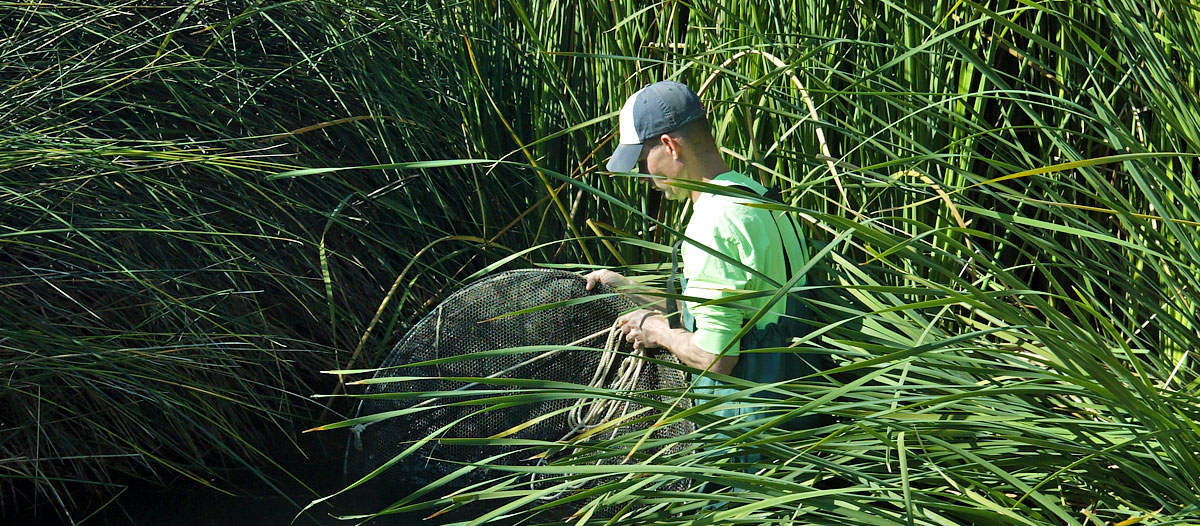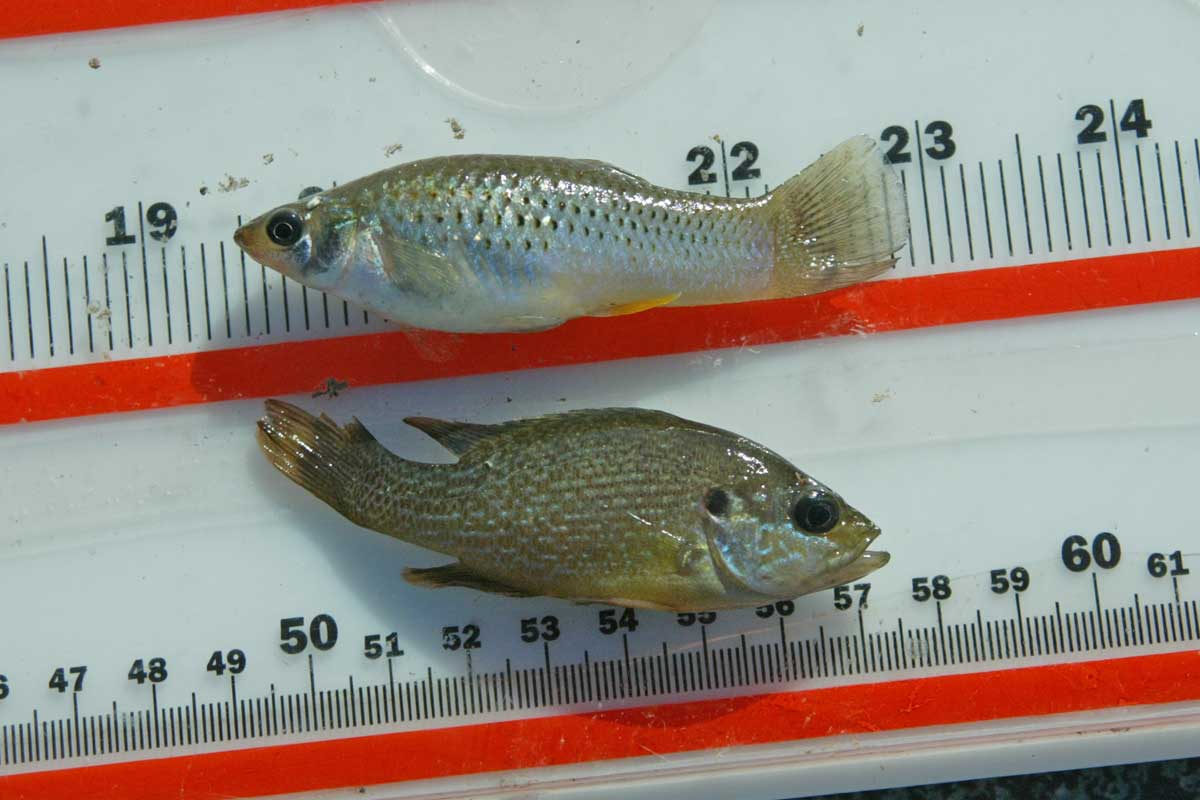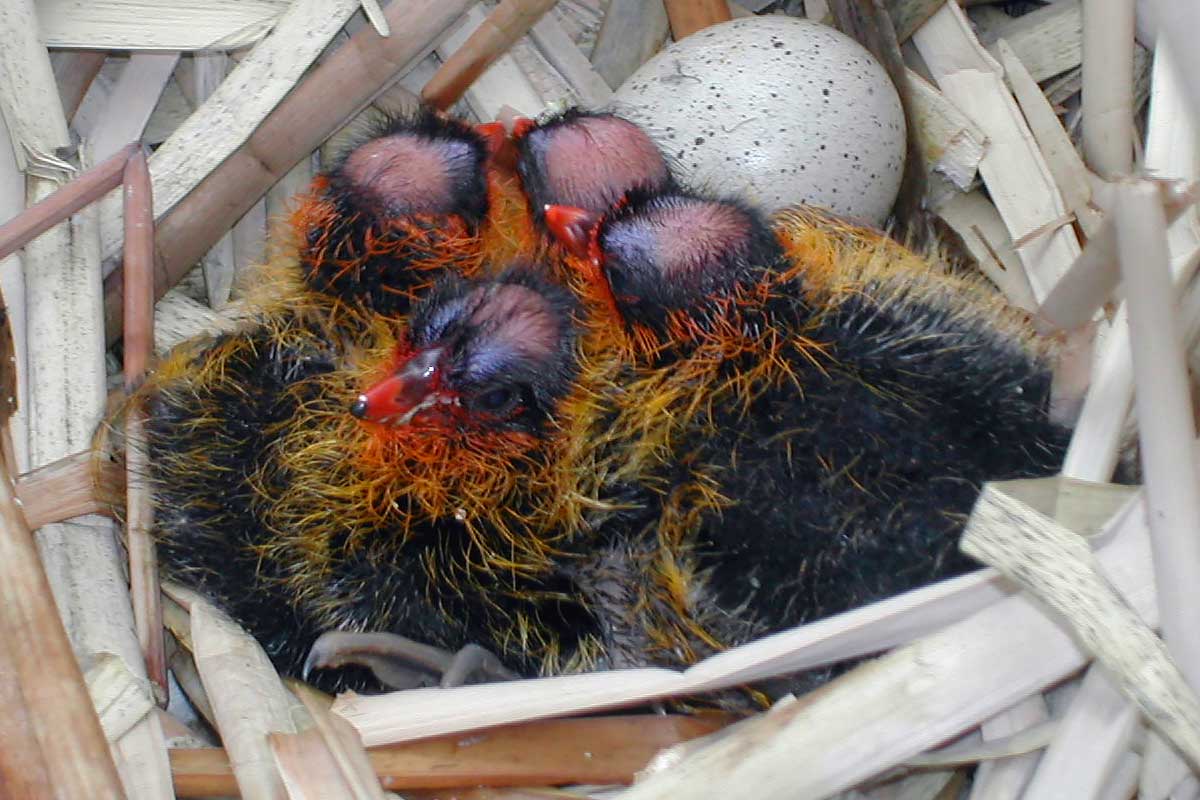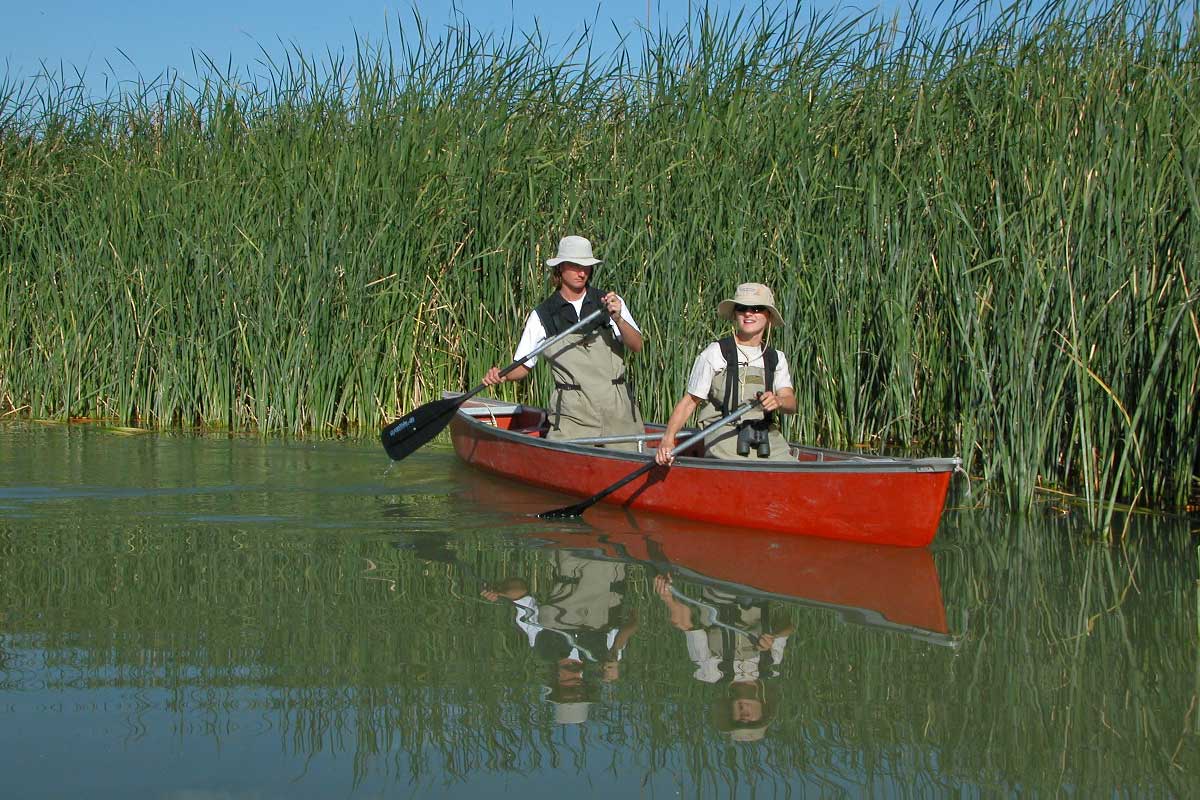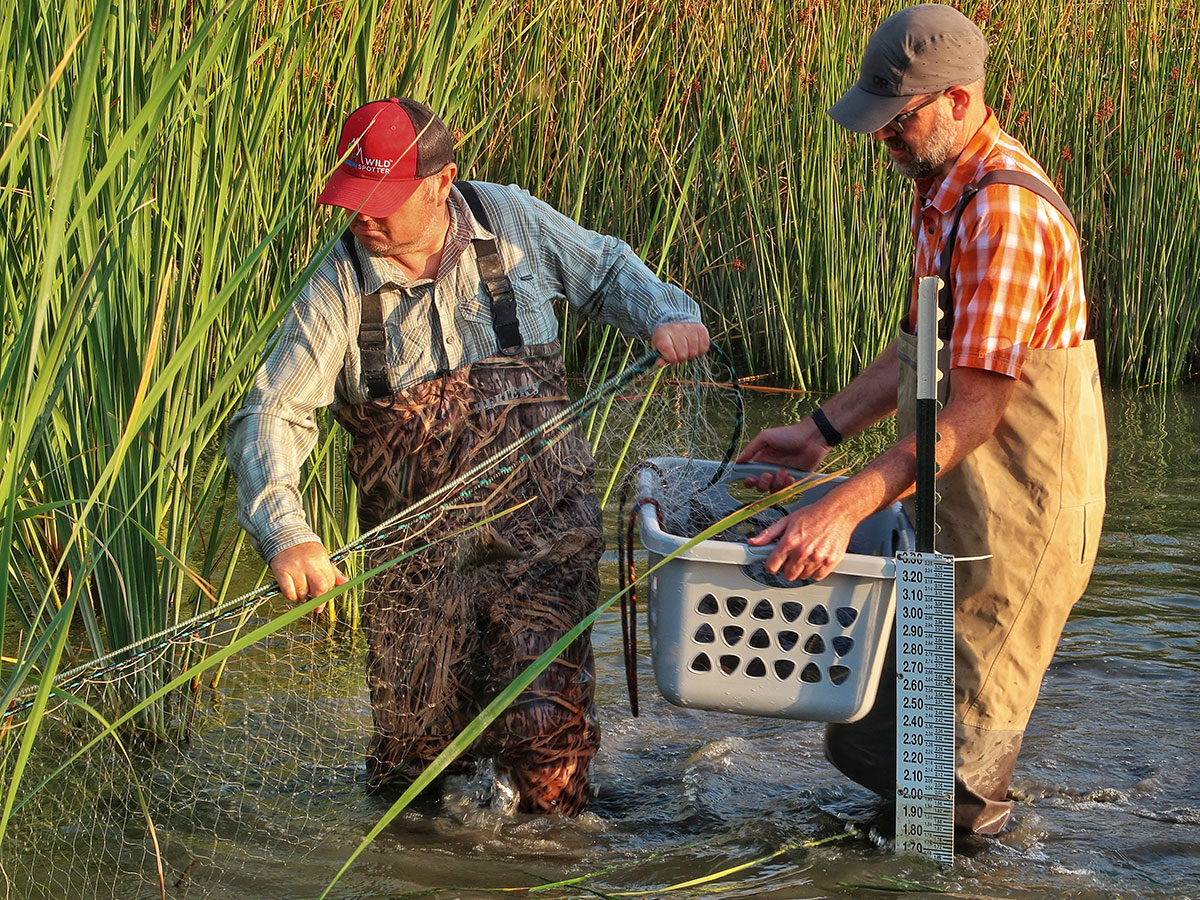As part of the management of the Las Vegas Wash, projects were initiated to control erosion, including construction of erosion control structures or weirs.
While weirs have provided significant benefits to the Wash in terms of water quality improvement and ecosystem enhancement, associated changes (such as slowing flow and ponding upstream of structures) can lead to the accumulation of contaminants. The upstream pools created by the weirs provide habitat for a variety of wetland plants, fish and wildlife, particularly migratory birds. These wetland areas have the potential to be contaminant “sinks,” exposing fish and wildlife to toxins that can bioaccumulate.
A bioassessment study was conducted to better monitor contaminants of potential concern (COPCs) and their uptake in vulnerable wildlife communities. Staff collected samples of water, sediment, fish tissue and bird eggs in 2003, 2005, 2007 and 2010, that were analyzed for COPCs. The study was reduced to sediment for a final round of sampling in 2018.
